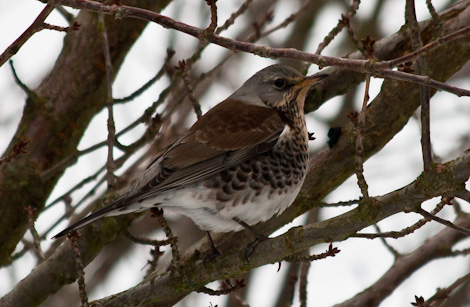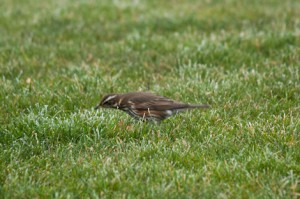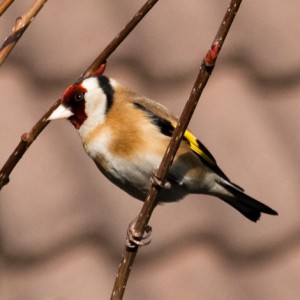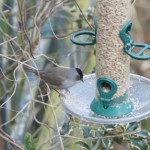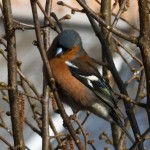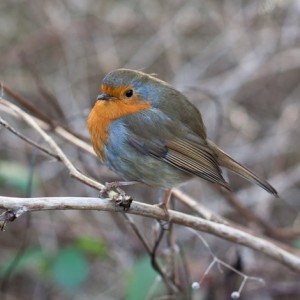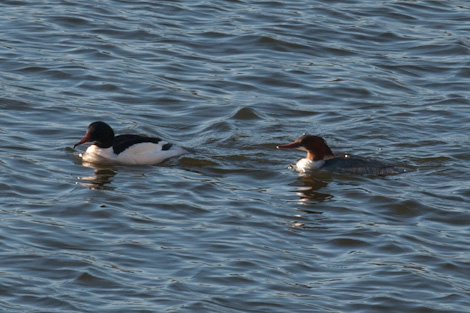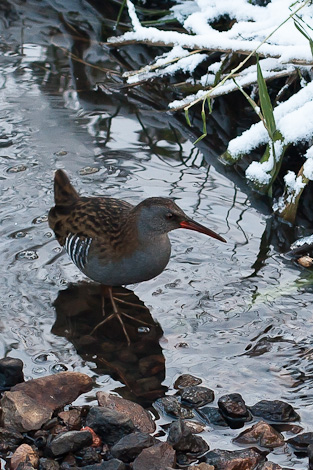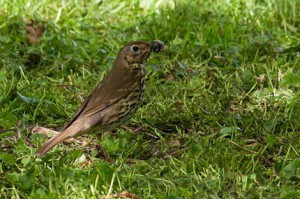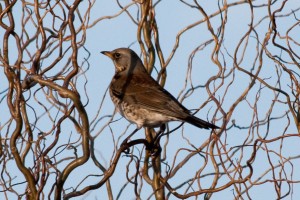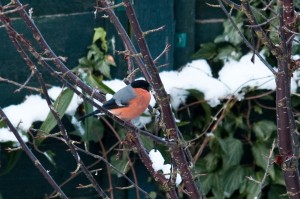Following my Easter Monday success I started visiting the country park more regularly with my spotting scope – aided by having a week off work. I started looking at the gulls and trying to see if there was much to be seen as it where. I didn’t expect to see much, after all, the black terns had disappeared and the little gull was nowhere to be seen, but then watching on your local patch is about appreciating what’s there all the time.
In the following two weeks I made another four trips to watch the birds. First of all I noticed that the different gulls tend to stick with birds of their own kind (not that different to people maybe). Closest to the shore and therefore people, were the black headed gulls. These are usually the largest in number and are the ones that come to the wooden pier by the visitor centre to feed on the bread thrown to the ducks.
Across the other side of the water there were a couple of flocks of larger gulls – lesser black backed and herring gulls. These were mixed but contained more of the lesser black backed – I’m not sure of the reason for this, maybe it is a sign of the decline of the herring gull which is being reported across the UK.
Then, somewhere in between there were the common gulls, although most of these appeared to be younger gulls, lacking the clean, ‘pretty’ look of the adults (they have been described as having a gentle appearance – which is true if you get a good look at them).
I noted that there were still a lot of younger looking gulls of all four species and wondered when they moult into full adult plumage – even though it was spring, do these still count as first winter adults? I noticed that the young birds all seemed to have a dark band across the edge of their tail, whereas the adults were pure white. I thought at first that this was just for the common gulls, but noticed it for the others too.
The black-headed gulls spent a lot of time sitting on the tern rafts and seemed to be tolerated by the terns there, as was the occasional common gull that ventured there. However, there was a communal effort to evict a lesser black backed gull that tried to land – when do common terns start to sit on eggs I wondered? For that matter, where do these gulls nest and breed. I have seen large flocks around various industrial estates, but wasn’t aware of any nesting sites particularly.
I had a partial answer to that by my visit on 2nd May – there were hardly any black headed gulls about at all – they had all gone. I assume they had flown off to their breeding sites wherever they are. The situation was still the same on the 4th May, but the common gulls were all but gone as well. I was left with the large gulls and about two dozen common terns. The latter look as though they are settling down on the tern rafts and it suddenly occurred to me that although I have seen them here for years, I have no idea if they have successfully bred or not. I need to know the answer to this and so now have a perfect excuse to spend two or three months with my telescope, not just a couple of weeks.
PS – my latest check of Brandon Marsh shows only a few common terns there – therefore I maintain my earlier assertion that the grass is not greener in other nature reserves.

